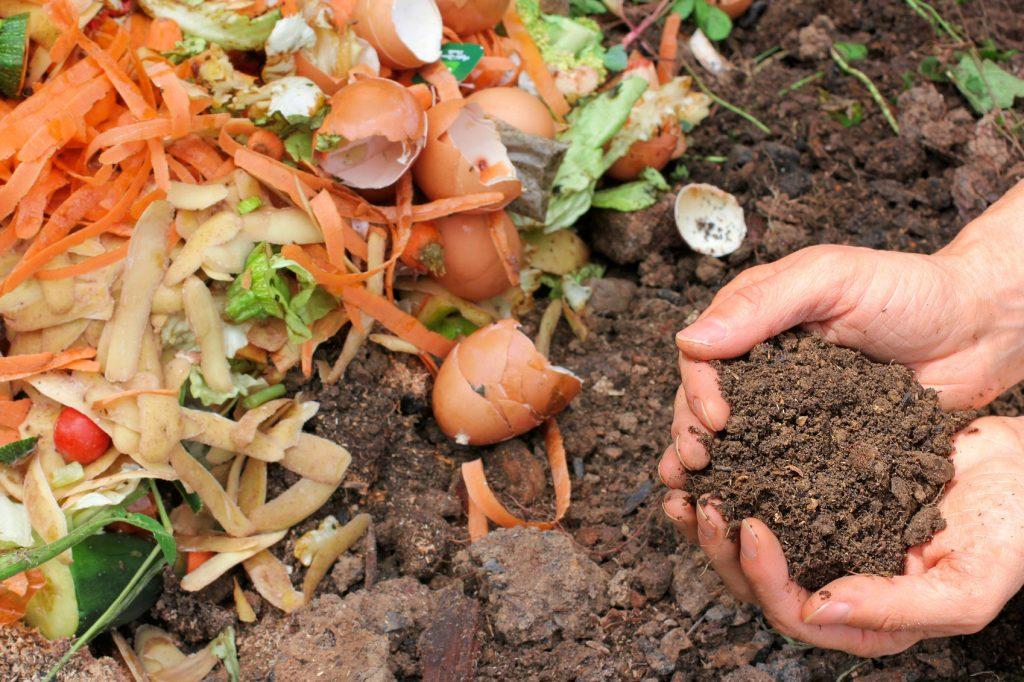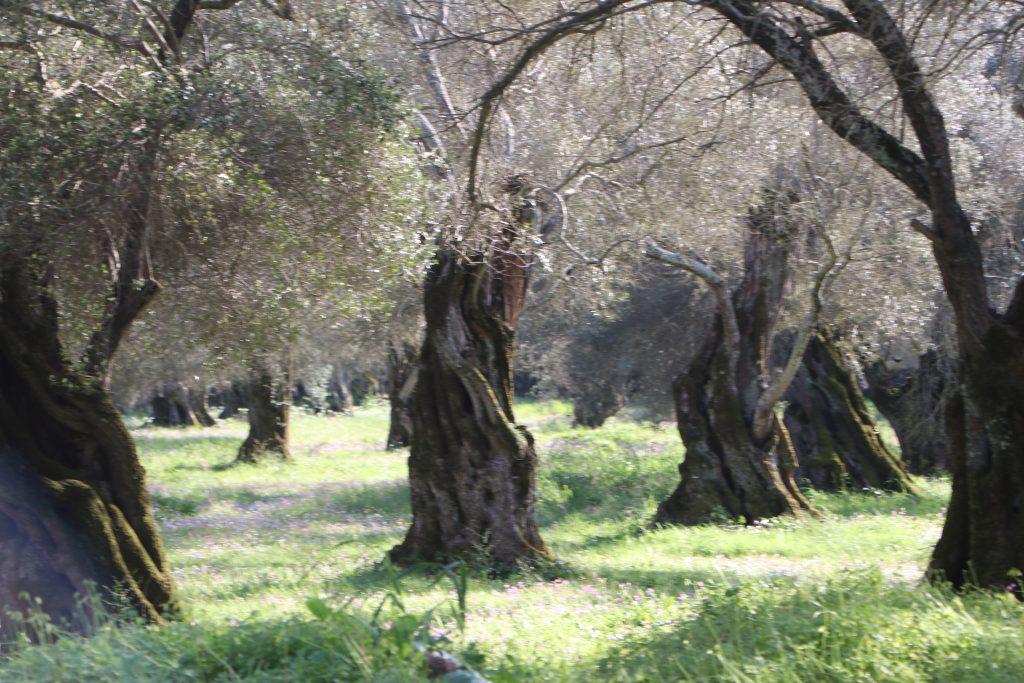In this article, we will explain why landfills are bad for environment and how can *you* contribute to reduce your waste.
At the end of it, a short video will sum up the main information.
You will find an “Landfill Guide”, to keep always next to you.

Any waste that is not recycled or reused has to go somewhere, and it usually ends up at a landfill site.
Landfill sites exist all over the world. Some sites practice ‘land raising’ (piling the rubbish directly on the ground), and some practice ‘landfilling’ (filling a hole in the ground with the rubbish).
In general, the waste management in Greece depends mainly on sanitary landfill sites (80%).
The rubbish in these piles is a mixture of household and commercial waste.
Landfill sites contain household rubbish. This is mostly organic waste: food, paper, cardboard or wood. And also plastic or thin packaging.
Landfill sites contains also commercial rubbish (such as soil, concrete and brick rubble).
It is a fact of life that humans produce waste, that cannot be changed. Waste is cumbersome issue that civilization has to deal with.
Greece generates approximately 504 kg of municipal solid waste (MSW) per capita (2017)/ 700kT of plastic waste each year, or 68 kg of plastic per citizen. 95% of that waste is plastic, much of it single-use items like supermarket carrier bags or water and soft drink bottles. Greece is the 8th largest producer of plastic goods in the region, but still relies heavily on landfills and only 8% of plastic waste is recycled. Greece has the 4th lowest recycling rate among the EU countries. Only 15% of the collected MSW was recycled, while approximately 4.1% of MSW was directed to composting plants. Less than 1.1% of the collected MSW are used to recover energy.
For recycling, Greece is using Blue Bins. The system collects mixed dry recyclables (paper, plastic, glass and metal) for sorting and recovery. The use of Blue Bins remains low across Greece.
The saddest part is that MORE THAN 40% OF THE WASTE PLACED IN BLUE BIN IS ESTIMATED TO END UP IN THE COUNTRY’S LANDFILLS. Because of lack of education and information, citizens do not know and do not understand how to recycle correctly, which causes that most of the plastic waste becomes lower quality and value for the recycling industry.
Overall, only 6% of all plastic waste is placed in blue bins,
Why are landfills bad for the environment?
Toxic waste is any unwanted material in all forms that can cause harm (e.g. by being inhaled, swallowed, or absorbed through the skin). Many of today’s household products such as televisions, computers and phones contain toxic chemicals that can pollute the air and contaminate soil and water. Disposing of such waste is a major public health issue and are harmful to the environment.
The three main problems with landfill are toxins, underwater pollution and greenhouse gases.
Landfill sites are ugly. And not just the eye sore of increasing piles of waste is the problem, landfills are a major source of pollution, and there are many negative issues associated with them. Rubbish buried in landfill like plastics, such as PVC and other materials leach toxic chemicals as they break down at a very slow rate and remains a problem for future generations. When these material decomposes, it releases what we call- « methane gas ».
As a potent greenhouse gas, methane releases up to 20 times more heat in the atmosphere compared with carbon dioxide.
High levels of methane can reduce the amount of oxygen breathed from the air. So how much methane is produced by a typical landfill site? A huge amount. In fact, enough to fuel a power station.
Landfill leachate is the liquid that exists as part of waste in a landfill. This is usually as a result of rainwater entering the landfill but is also due to the natural decomposition of organic material along with other liquids and chemicals that have been discarded. Rainwater passes through the waste in the landfill and if the landfill is not properly lined or the leachate is not properly managed, it is at risk of mixing with the groundwater near the site.
Uncollected waste leads to 40kT of plastic leaking into nature each year. 11.5kT of plastic enters the Mediterranean, including 28% from sea-based sources, such as ghost finishing nets and equipment. Almost 70% of this waste makes its way back to pollute Greek coastlines each year. Greece’s economy loses an estimated €26M annually due to plastic pollution.
Life and health for lives
There are Long-term exposures FOR THE HEALTH:
nauseous odors, unpleasant views, rat and seagull infestations, which create their own waste problems.
Greek nature is characterized by rich fauna and flora, while it is also considered as one of the most important TOURISTIC endemic center in Europe.
Plastic waste has INJURED OR EVEN KILLED MORE THAN 270 SPECIES and just ONE creation of a landfill site could result in the loss of up to 300 species PER HECTARE.
Climate changes
Plastic is also a problem for climate, health and social justice . 99% of plastic is made from fossil fuels, such as fracking gas and oil, and contributes to climate change throughout its life cycle.
Greece is among the countries EXPECTED TO BE HIT SIGNIFICANTLY FROM CLIMATE CHANGE. By the middle of the century, the average temperature may increase between 0.15-0.48⁰C per decade in some of the largest Greek municipalities and the average rainfall will decrease, while the sea level will rise to a remarkable degree.
But, Despite the relatively small manufacturing sector, the per capita emissions of greenhouse gases (GHG) in Greece are 3% higher than the EU27 average.
However, the country is still facing long-term challenges in different environmental areas. The first one is RECYCLING AND WASTE MANAGEMENT.
The waste management plan in Greece has to be changed.
Out of 4639 solid waste disposal sites in Greece (in 1993), 3099 (66,5 %) are officially recognized as uncontrolled landfills, according to the Ministry of Environment Physical Planning and Public Works. Thus, the restoration of thousands of uncontrolled landfills in Greece is an urgent, complicated and difficult problem. During the last three years, almost 20 million have been spent for restoration of uncontrolled landfills. But, when engineers have to design a restoration plan for an uncontrolled landfill (which is a typical Greek case), they often face up that there is no available data. (Mavropoulos, Kaliampakos, Kareas landfill in Athens and Skafidaras landfill in Crete, Peloponnese)
After the failure to meet targets set in 2015, the new updated National Waste Management Plan (ESDA) for 2020-30 is to reduce the amount of waste that ends up at landfills to 10% by the end of the decade –currently 80% of waste heads to landfills.
The plan also foresees an end to uncontrolled waste disposal and the rehabilitation of illegal landfills by 2022.
The aim is to increase recycling to 55% in 2025 and 60% in 2030 (including biowaste), as well as to separate the collection of organic waste and develop the required infrastructure throughout the country by 2022.
Serious doubts have been arisen about chemical recycling efficacy, as it seeks to lead to the processing of a larger amount of recyclable items, but its environmental impact is questionable.
While according to many experts, it is developed exclusively with financial benefits leading many to withhold support in favor of starting with simpler solutions.
But for now, government is only going to wrong direction,
(focus on more landfill rather than constructed more recycling centers)
This is a lack of will from the municipalities to do something for this issue.
People are urging for them to act: to create more recycling factories, etc.
The best would be to stop plastic, separating better the waste, and recycle more what can be recycle, but instead, the government is: nowadays, the government is only focusing his effort to build or extend even more and more to landfill areas (the country’s largest landfill at Fyli on the outskirts of Athens).
Prime Minister on the waste management in Greece said that next to the green bins for mixed waste and blue bins for recycling waste, brown bins for bio-waste will be initially introduced to hotels, restaurants, hospitals and supermarkets for expired products.
One of his target is the closure of illegal landfills, THAT BY 2040 WILL NOT BE ALLOWED TO ACCEPT MORE THAN 10% OF MUNICIPAL WASTE.

Composting
The average household throws away 1 kilogram of organic waste each day—vegetable cuttings, fruit peels, eggshells, coffee grounds, and yard trimmings that could instead be composted. When we discard organic waste, we not only lose precious landfill space but also miss out on a valuable resource that can help beautify parks, gardens, and lawns.
Landfills are filling up and getting a new landfill approved is becoming very difficult- that’s why landfill should be used for items that can’t be turned to new products (paper, glass, etc.).
The Good news is that MOST OF WHAT ENDS UP IN LANDFILL (80%) CAN BE REUSED, RECYCLED OR COMPOSTED TO NEW MATERIALS. In the landfill, Food, yard waste doesn’t break down into soil compost or anything useful because there is no oxygen. Even worst: food and yard waste creates liquid that loses through other waste and picks up other contaminants and could cause water pollution.
Plus- when this organic waste decomposes, it releases methane- greenhouse gas.
Among all of the treatment options for organic waste, composting is the most approved method as an effective strategy to divert solid waste from landfills. and organic waste can be reused and turned into nutrient-rich compost. Composting exposes the organic waste to oxygen which allows it to break down as in nature as a valuable product that is used in parks, gardens and farms to improve soil.

YOU CAN SAY NO TO PLASTIC!
For the ‘’To go cups’’: use reusable mugs and cups
For Bottled water: use reusable water bottle.
Concerning the Packaging: buy items with no packaging at all or minimal packaging.
Recycle and compost. Composting could reduce half of the landfills size.
Concerning the clothing: buy natural materials. Because the synthetic fibers end up in the ocean.
Clean Up After Yourself. Leave nothing behind that may pollute the environment. Stop throwing a plastic in the lagoon, in the sea, and even on the roadside.
sources:
WtERT – Waste to Energy – Support for Decisions
Microsoft Word – Factsheet on environment_draft 28Jun2020
Waste management plan set to improve standards | eKathimerini.com
What is a landfill? Why are landfills bad for the environment? | Unisan UK
